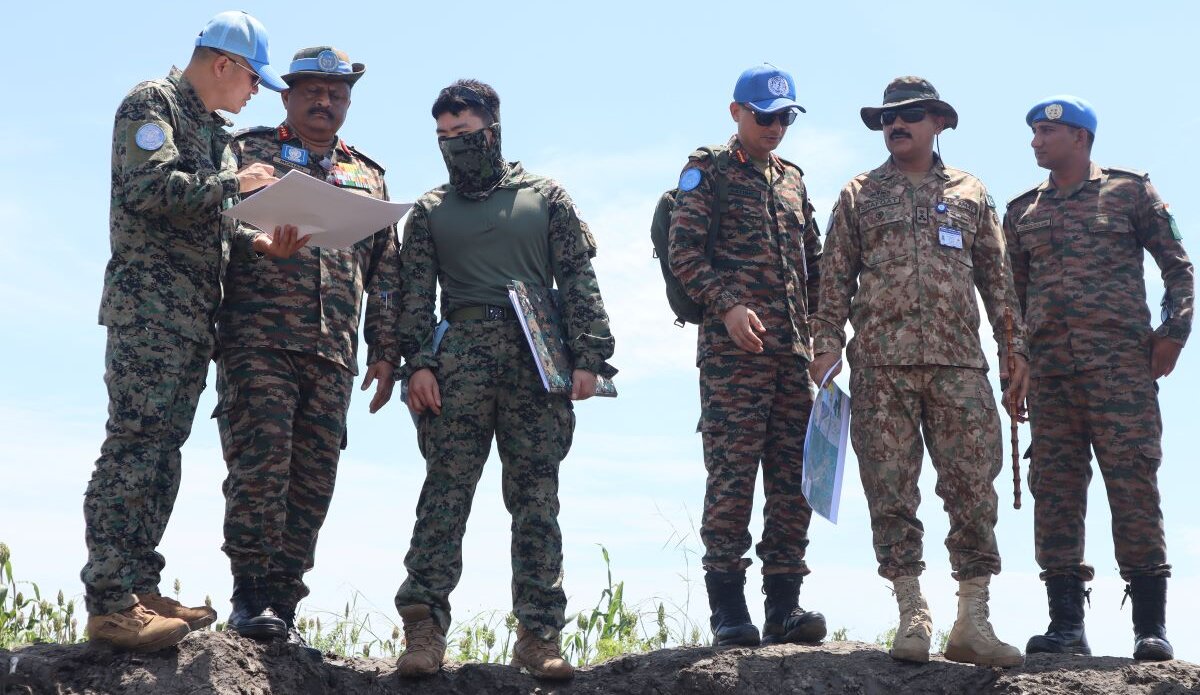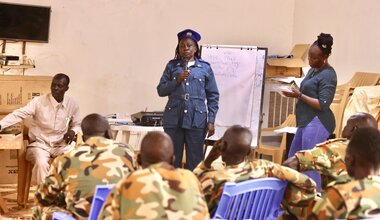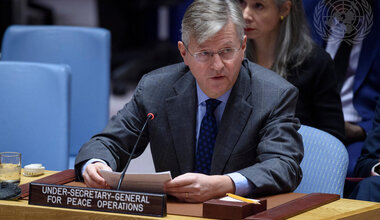UNMISS Force Commander assesses operational readiness for floods in Greater Pibor and Akobo
GREATER PIBOR - Severe flooding in South Sudan has forced many to flee their homes, often losing their livelihoods and properties in the process. These devastating effects have caused an urgent need for both humanitarian aid and proactive measures to minimize the impact of more expected downpours.
To keep himself up to date with activities undertaken to increase the readiness of communities in Greater Pibor and Akobo, Mohan Subramanian, Force Commander of the United Nations Mission in South Sudan (UNMISS), recently went to these locations to engage with peacekeepers, local authorities, and other key stakeholders.
“In Pibor, our South Korean engineering troops are constructing dykes, in total more than 3 kilometres long, to protect essential infrastructure like the airstrip, the Kondoko Primary School, the main hospital, government offices, and warehouses where humanitarian aid is stored,” the Force Commander stated, adding that the engineering work, which complements government initiatives, is likely to be completed by the end of the month.
Racing against time and ominous weather forecasts, other members of the UN family in South Sudan, like the Food and Agriculture Organization (FAO), are also taking speedy and proactive action to protect local communities.
“We are vaccinating more than 1,500 heads of livestock while we can, before floods are expected to hit the area. We are also distributing fishing nets,” said Abakr Rajab, the FAO focal person in Pibor.
Climate forecasts indicate that over three million South Sudanese may be impacted by floods between September and December, the typical peak of the country’s rainy season.
 UN
UN United Nations Peacekeeping
United Nations Peacekeeping





